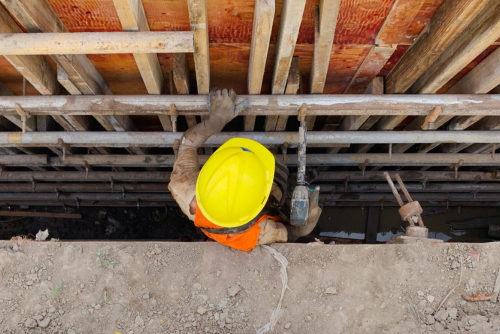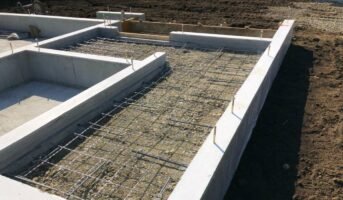Reinforcements are an essential part of any construction project, specifically concrete. It refers to materials like steel rebars and carbon fibre sheets that provide strength and support to the structure against various factors. Curtailment of reinforcement is an important part of the construction process.
The process includes placing beams at strategic position for the optimum use of material. Employing curtailment in the construction process ensures strength and durability of the structure. In this article, we have discussed the significance and methodology of curtailement.
See also: Beam ties: Know significance, benefits and calculation

Why is curtailment done?
There are several reasons as to why curtailment is such a common practice in the construction industry. Check out some of the major reasons in the section below.
Connections and joints
When constructing concrete structures like beams, columns, and slabs, it’s essential to create joints or connections where two structural elements meet. To ensure these connections are strong, reinforcement bars are often terminated or curtailed at specific points. These joints can be either temporary construction joints or intentional contraction joints that help control cracking.
Changes in section
When a structural element undergoes changes in size or cross-sectional shape along its length, it may be necessary to curtail the reinforcement at the transition point. For instance, in a T-shaped beam, the rebar can be terminated where the web of the T meets the top flange.
Load transfer
Sometimes, the loads in a structure need to be shifted from one part to another to avoid overburdening a specific portion of the structure. To achieve this, reinforcing bars may be cut and shaped into a load transfer mechanism.
Spacing requirements
Design codes and standards often dictate the minimum and maximum spacing for reinforcement bars. In cases where a particular section of the structural element does not require additional reinforcement or if spacing requirements do not mandate it, the bars can be shortened.
Design considerations
When designing the reinforcement layout, structural engineers take into account factors such as load distribution and deflection control to ensure optimal structural performance. This involves reducing or adjusting the placement of reinforcements at specific areas.
Cost cutting
Curtailment minimises the amount of rebar needed, resulting in cost savings. The fabrication and installation of shorter rebar lengths are also more efficient, reducing labour expenses. Strategic application of curtailment in areas where full-length reinforcement is unnecessary optimises construction resources and reduces the project budget while still ensuring structural integrity and safety
Types of curtailments
Curtailment in concrete structure refers to the method that can be used to reduce or modify the reinforcement slab within a structure. Amongst the several types of curtailments, the following are commonly used in the concrete structures.
Midpoint curtailment
Midpoint curtailment is referred as mid-span curtailment or mid-curtailment. It involves ending or cutting off the reinforcement bars (rebar) at the middle of a structural span, for instance in beams or slabs. In this process, the bars are terminated at the midpoint rather than extending the rebar uninterruptedly from one end of the span to the other.
Double-ended curtailment
Shortening two beam connection points is called double ended curtailment. The method refers to the practice of placing steel bars (steel bars) that stop or terminate at either end of a beam that will connect to other structural elements like posts or other support.
FAQs
What are reinforcements?
Reinforcements refer to materials i.e. steel bars or mesh that are used in construction that process to provide strength and support to the concrete structure. These are highly important in concrete structures.
What is the development length of reinforcement?
Development length of the reinforcement is the length of steel that must be embedded in the concrete so that the steel can develop its full strength and bond with the surrounding material.
Is curtailment a safe technique?
Yes, curtailment is a safe technique and is done after due consideration of the mandates and guidelines.
What are the advantages of curtailment?
The major advantages of curtailment is better load distribution, integrity and strength in the structure. Benefits of truncation include cost savings through reduced material consumption, increased construction efficiency, better load distribution and improved structural integrity by placing steel reinforcement where it is needed most.
What are the safety mandates in places related to curtailment?
The safety mandates related to curtailment all take into accountconsiders factors like material quality, labour safety and proper supervision of the process by the structural engineer.
Where is curtailment done?
Curtailment is done either on the midpoint of the beam or towards the ends depending on the structural requirements.
Is curtailment specified in construction plans?
Yes, curtailment in construction plans is mentioned by specifying the location, size, and type of curtailment, as well as any required lap splices or additional reinforcement in the curtailed area.
| Got any questions or point of view on our article? We would love to hear from you. Write to our Editor-in-Chief Jhumur Ghosh at jhumur.ghosh1@housing.com |

Riddhi Chatterji is currently pursuing a master’s degree in English literature from University of Delhi. Her meticulous attention to detail and the desire to make a learning experience out of every opportunity has allowed her to work with different forms of textual content for digital platforms, ranging from social media to news desks. When not working or studying , you can find her with her head buried in a book, discovering new music and movies, or out and about exploring the city on the metro.











